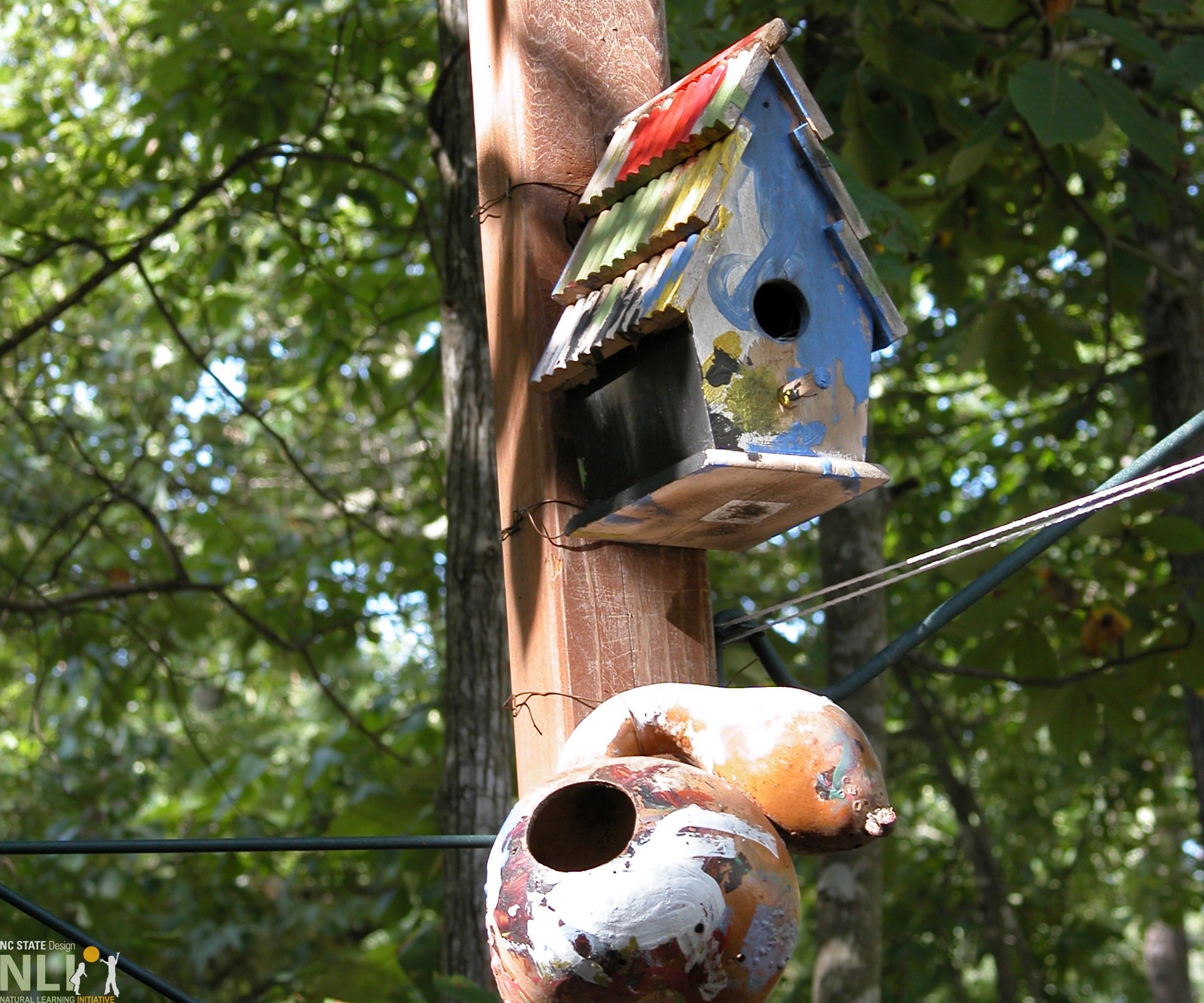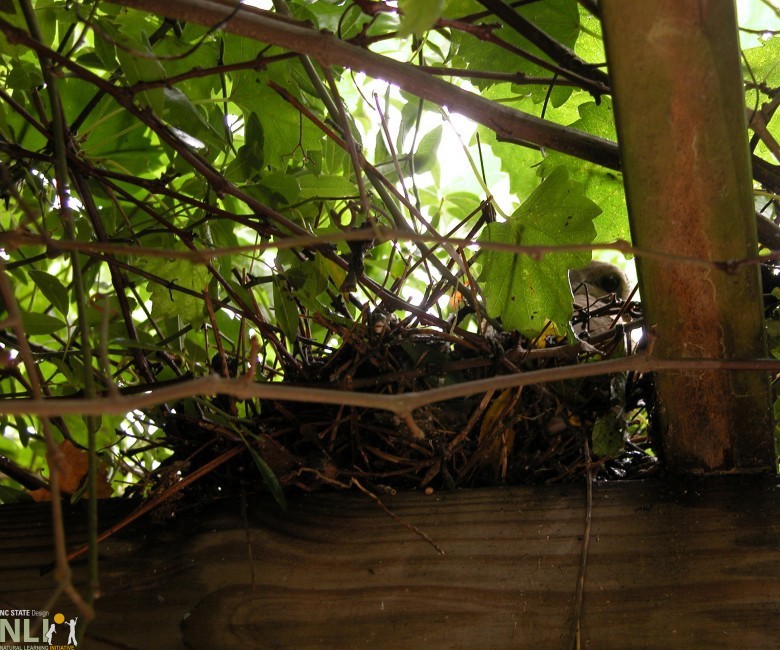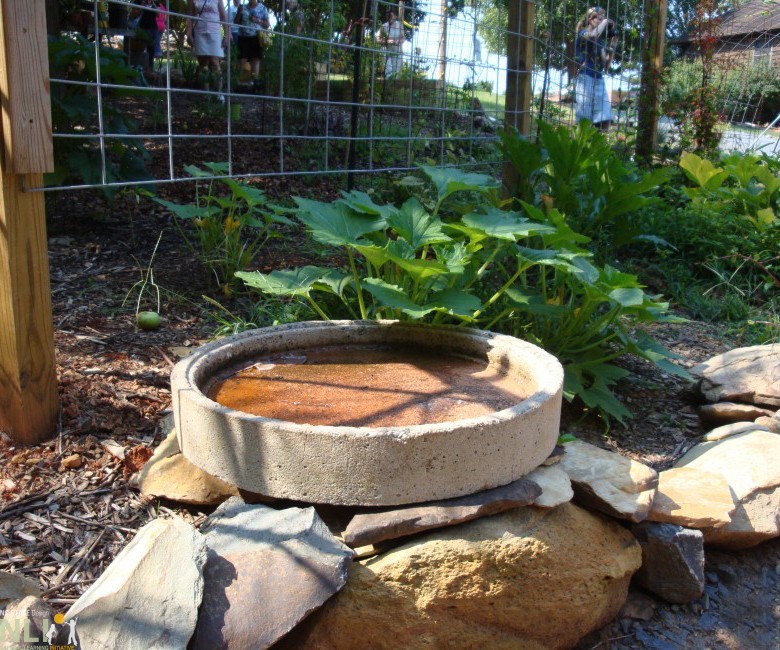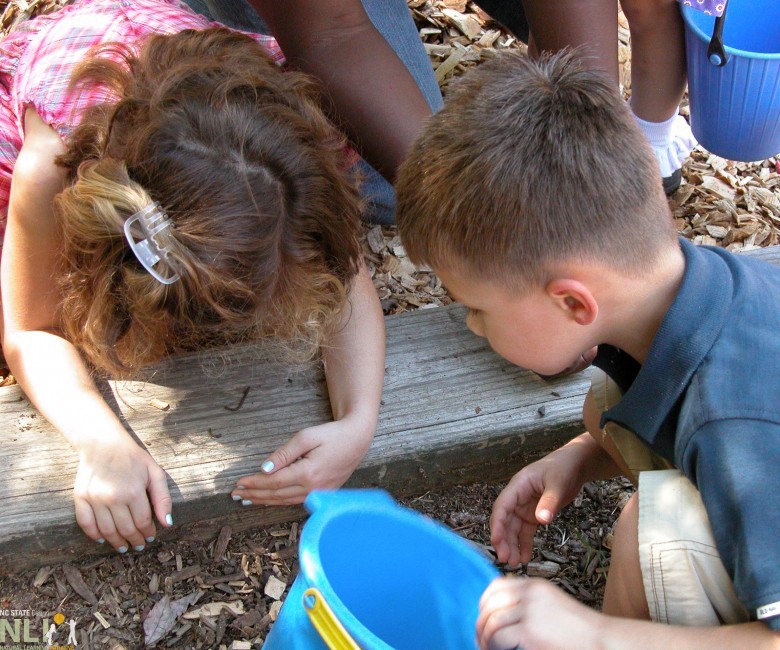The Green Desk
Learning About Birds, Bugs, and other Critters
Can bird feeders be used inside fenced play area?
From the North Carolina Rated License Assessment Project:
There are no specific ERS requirements related to bird feeders; good maintenance and supervision of children should eliminate health or safety challenges. Bird feeders can create opportunities for conversations and vocabulary development, as well as other skills such as observing, predicting, documenting, comparing, counting, charting, and categorizing.
From the North Carolina Division of Child Development and Early Education:
DCD is not aware of any concerns or problems that have arisen around bird feeders. You wouldn’t want to promote/attract vermin however.
From the North Carolina Children’s Environmental Health Branch:
Rule 2831(b) requires premises to be maintained in a manner which does not encourage the harborage of vermin. Effective measures shall be taken to keep uncontained insects, rodents, and other vermin out of child care centers and to prevent their breeding or presence on the premises. Bird food that has spilled on the ground will attract rodents, which may attract snakes looking for a food source. It is recommended that these areas be monitored daily to minimize potential problems.
If we have a bird bath, how often does the water need to be changed or the bath cleaned and can this be inside of the fence?
From the North Carolina Rated License Assessment Project:
We would defer to Environmental Health on this topic.
From the North Carolina Division of Child Development and Early Education:
Stagnant water would be an issue. Also, dependent upon the type of bird bath/construction – it would need to be determined if there was any drowning hazard presented.
From the North Carolina Children’s Environmental Health Branch:
Items that can collect standing water in the OLE are required to be emptied and stored to prevent standing water. The water should be changed daily to prevent an ideal environment for mosquito breeding.
Is it ok to dig for bugs or use a “carpet lift up” or plastic bath mat to attract and watch bugs?
From the North Carolina Rated License Assessment Project:
Assessors consider the overall maintenance of the outdoor area for repair/maintenance, safety, and sanitation issues. However, if children were observed lifting up a rock or mat to see bugs this would generally not be a concern. Assessors always consider the quality of supervision provided and whether staff are aware of children’s activities. When language occurs with staff and children related to such an activity this earns credit in the nature/science item for using everyday nature/science events as a basis for learning about the natural world, as long as there is some relevant, factual content.
From the North Carolina Division of Child Development and Early Education:
Bugs are a natural part of the outdoor area so there is no way to keep all bugs away. An infestation is different and would not be acceptable. Children can roll away logs or any other flat item on the ground to watch bugs but having this activity farther away from the building may minimize bugs coming in to the building. There’s a difference in digging or watching for bugs and digging in red ant hills. Also, the type of activity described in the question should not be an excuse for a swarm of cockroaches in the center.
From the North Carolina Children’s Environmental Health Branch:
Sanitation rules require effective measures to keep uncontained insects, rodents, and other vermin out of child care centers and to prevent their breeding or presence on the premises.
Rule .2831 was amended effective August 2, 2007 and includes a prohibition against keeping amphibians as pets. Does this preclude keeping tadpoles at child care as an educational project for children to observe the development of tadpoles into frogs?
From the North Carolina Rated License Assessment Project:
Tadpoles would be credited in the nature/science item, in addition to other more common examples of “living things” such as plants or fish. Should children handle the tadpoles or touch the water, then hand washing is expected.
From the North Carolina Division of Child Development and Early Education:
We would defer to Environmental Health on this topic.
From the North Carolina Children’s Environmental Health Branch:
Tadpoles are allowable as part of an educational project with the understanding that they would not become permanent pets. A plan should be in place for getting rid of the adult frogs. Most important is the need for handwashing as specified in Rule .2803, in this case to prevent the transmission of salmonella. Handwashing is particularly important if children handle the tadpoles (not recommended) in addition to observing the developmental changes.
Overview from the North Carolina Outdoor Learning Environments Alliance:
Some experts say that children today know more about dinosaurs and animals in far away places than they know about the critters that live in their back yards. Schools and early care and education programs can provide opportunities for children to see and learn about the habits of birds, bugs, squirrels, butterflies, and other wildlife that is common to the area. Settings that bring wildlife close and observable to children can be simple and affordable. Supportive materials such as paper and pencils, art supplies, microscopes, binoculars can bring out the scientist in a child.
*This post is from a series of FAQ about child care outdoor learning environment regulations in North Carolina. Please see the intro post, Child Care OLE Regulation FAQ in North Carolina.





